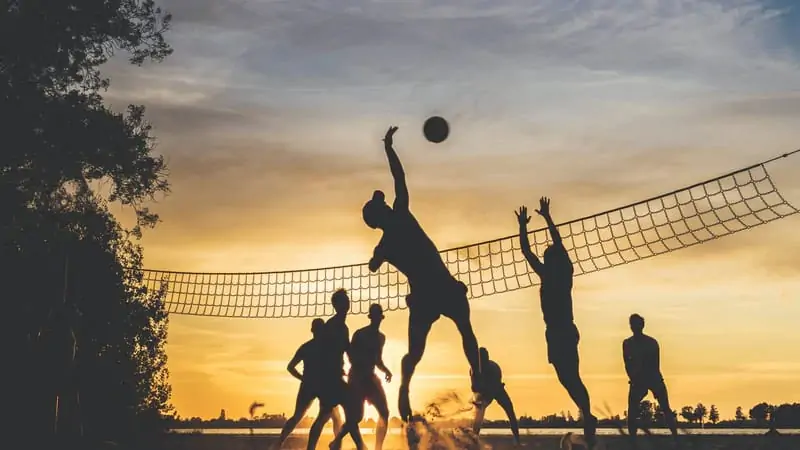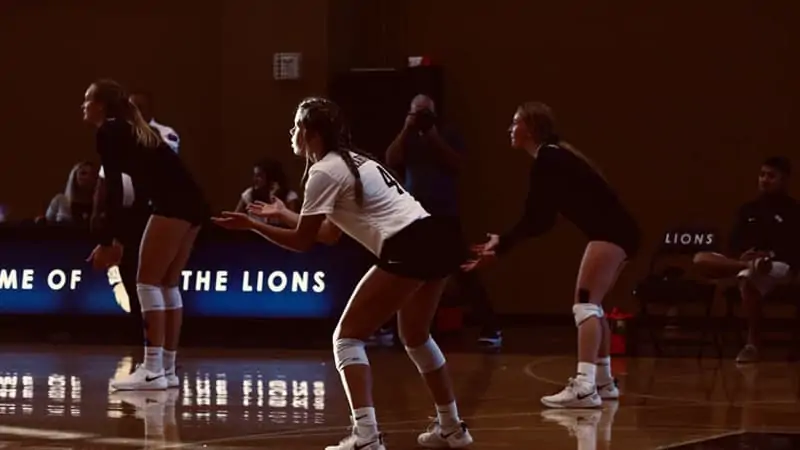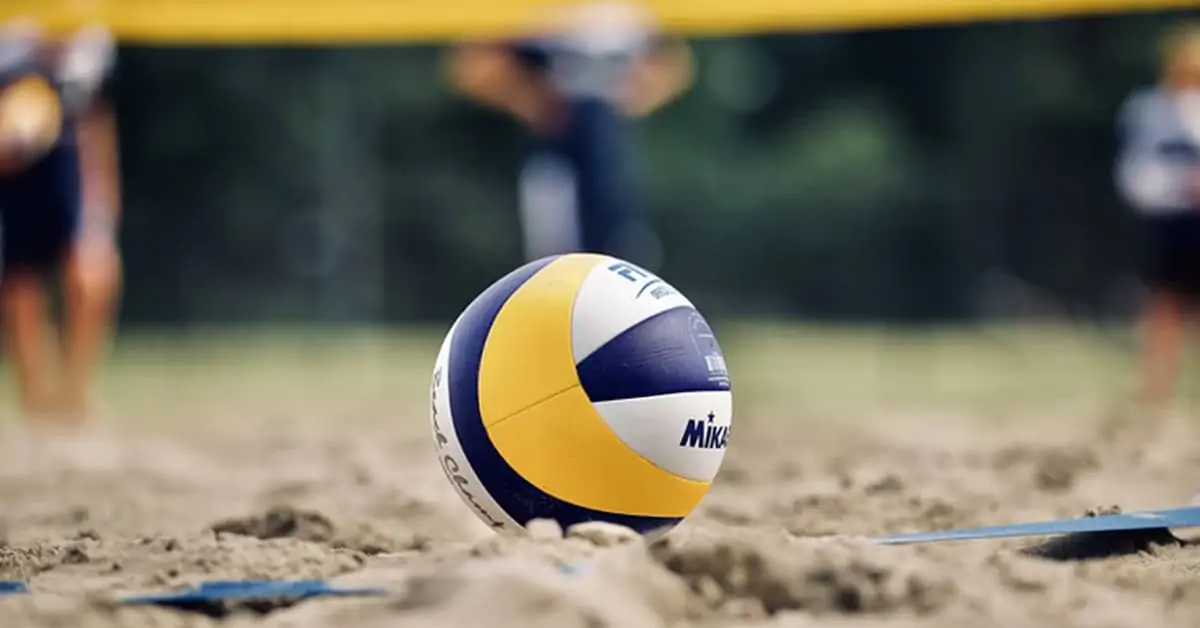Both Spikeball and volleyball are popular beach and lawn games. In both, you don’t need a big team or too much equipment. A ball, a net, and a few friends is all it takes for the fun to begin. If you’re new to either game, then you might be curious on what makes these two popular games so similar yet also different.
Spikeball uses a palm-sized ball with a 12-inch circumference while volleyball uses a bigger 25-inch circumference ball. Spikeball has 2 players per team while volleyball has 6 per team. Spikeball players hit the ball into the circular net while volleyball players shoot over the net.
Want to learn more about these two popular outdoor games? Read on for more about kits, pitch, players, and the general rules of both games.
Does Spikeball Use Volleyball Skills?

Spikeball players use similar skills as volleyball players. Some of the shared skills include:
- Quick leg and body movements
- Teamwork
- Hand-to-eye coordination
- Strong wrist action
- Interpersonal communication
What’s The Difference Between Spikeball and Volleyball?
While both spikeball are fun and energetic games, there are some fundamental differences. Here’s a summary of the main differences:
Ball
Spikeball uses a 12-inch circumference ball while volleyball uses a 25-inch circumference ball. Most spikeball players prefer the ball to be pumped to medium pressure where you can compress the ball with your hand.
An indoor volleyball should be firm to the touch and pumped to at least 4.2 pounds per square inch (psi) pressure. An outdoor volleyball ball can be a little softer than the indoor ball but not as soft as a spikeball.
Net
Spikeball uses a circular trampoline-like net about eight inches off the ground while volleyball uses a rectangular net strung between two poles.
There are two main sizes of spikeball nets. The rookie net is 45 inches circumference while the standard net has a 36-inch circumference. Most manufacturers make an adjustable net which you can fit to your preferred size.
For volleyball, the poles are stuck upright about 30 feet apart. The net height depends on the age and gender of the players. The regulation heights are:
- Men’s volleyball 7ft 11 inches
- Women’s volleyball 7f 4 inches
- Senior volleyball 7ft 2 inches
- Kids’ volleyball 7ft 4 inches
- Wheelchair volleyball 4ft 11 inches
Play

A game of spikeball has two teams with two players on each team. Volleyball has two teams with 6 players on each team. For casual games, volleyball teams can have 4 on each side or any desired number per side.
When the game of spikeball begins, players from opposing teams stand on different sides facing each other. The players must be at least six feet from the net, except the receiver who can stand at any desired distance.
Once the spikeball server strikes the ball, the players can move anywhere around the net. There are no sides for each team.
Each team has a maximum of three alternating touches per possession. The teams change possession when the ball contacts the net. When one team fails to connect the ball to the net, the other side wins a point.
The receiving team sets their standing position and the serving team stands opposite. Servers rotate the starting positions 90 degrees counterclockwise at each serve. The rotation acts to equalize the effects of wind and sun, especially when playing outdoors.
The game is won when one team reaches 11, 15, or 21 points. The winning team must lead by at least two points unless the teams agree on another number.
When play begins, the server stands directly opposite the desired receiver. The server must toss the ball at least 4 inches high otherwise it is ruled as a fault. If the server serves two faults consecutively, the receiving team wins a point and gets to serve.
When playing volleyball, each team is on different sides of the net. Players are not allowed to cross to the opposing team’s side.
Each team places one row of players close to the net and one row of players close to the rear boundary of the court. The server stands at the back right corner behind the line of the court and must hit the ball to land in the opposing team’s half of the court.
Each team has a maximum of three alternating touches. A team wins a point when:
- The ball lands on the ground on the opposing team’s side.
- The ball goes outside the court boundaries.
- The ball hits the net without crossing to your side.
- A player on the opposing team touches the net.
- The server’s foot crosses the court line, it counts as a foot fault and the other team scores a point.
- A player’s foot goes under the net.
- One player hits the ball two consecutive times.
- A team hits the ball more than 3 teams before sending it over the net.
- Returning the ball under the net instead of over.
What’s The Similarity Between Spikeball and Volleyball?
Spikeball is a fairly new net sport inspired by the much more traditional volleyball. The two games share some similar concepts even though they are completely different.
They are both intense and competitive games. Some similarities include:
- They both use a net. The spikeball net is smaller and circular while the volleyball net is bigger and rectangular.
- Both sports use a ball. The spikeball ball is smaller and softer while the volleyball ball is firmer and bigger.
- In spikeball, each team hits the ball into the net while in volleyball the objective is to hit the ball over the net.
- In both sports, the teams start each serve standing on opposing sides. However, during play, spikeball players can move anywhere they like. Volleyball players have to stick to their team’s side of the court throughout the game and change sides at half time.
- While volleyball teams have their distinct side of the court, spikeball teams have no sides. However, the servers rotate 90 degrees at each serve to equalize for wind and sunlight.
- In both sports, each team rotates its servers.
- In both games, players need to be fast, have great eye-hand coordination, and create synergy as a team.
- Both games are fairly easy to set up. You need some space, a net, a ball, and willing players.
- Both games can be played either indoors or outdoors.
- While volleyball is more established and is highly competitive internationally at pro level, spikeball is quickly catching up. There are collegiate and regional tournaments all across the US and in places like Canada and Australia.

